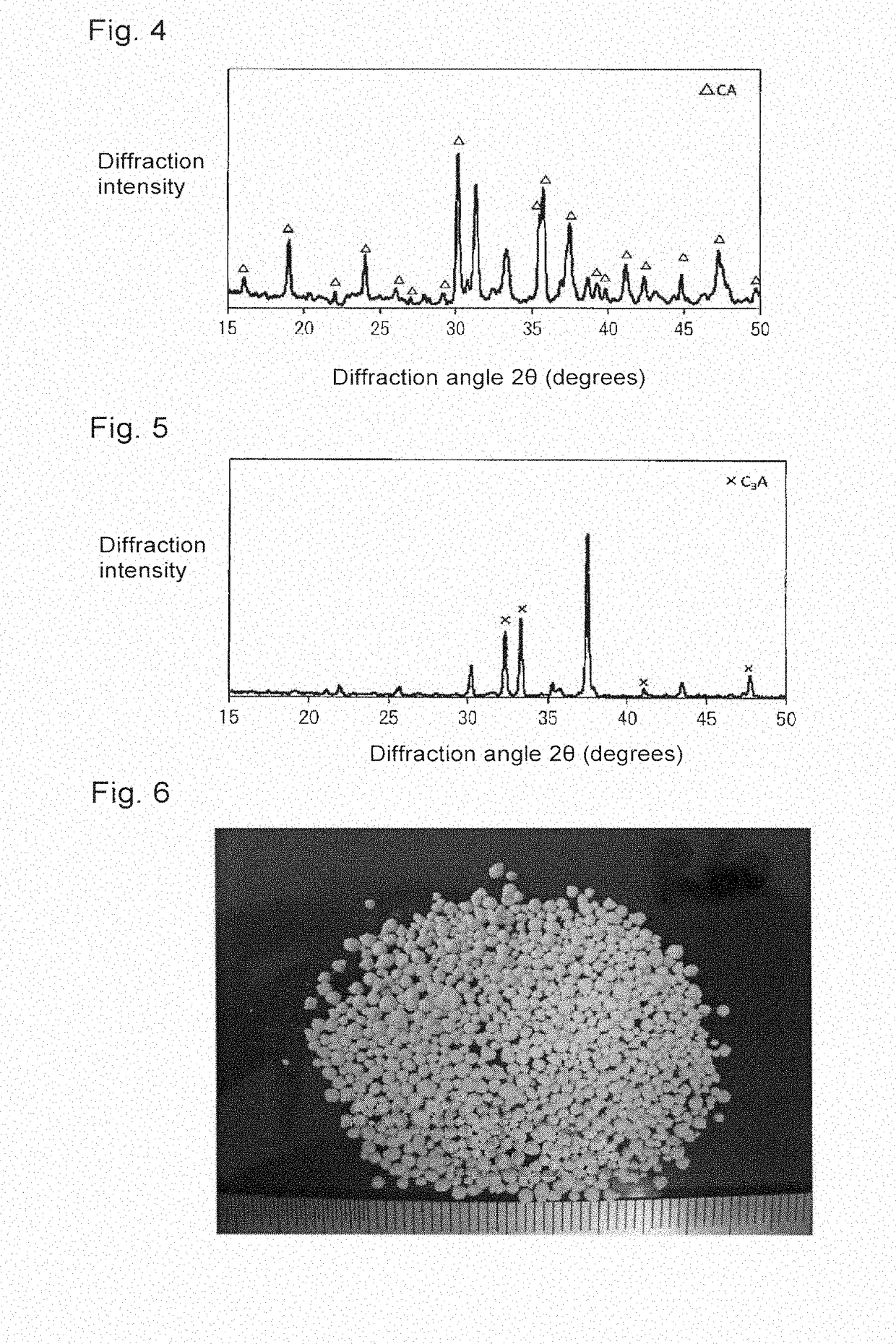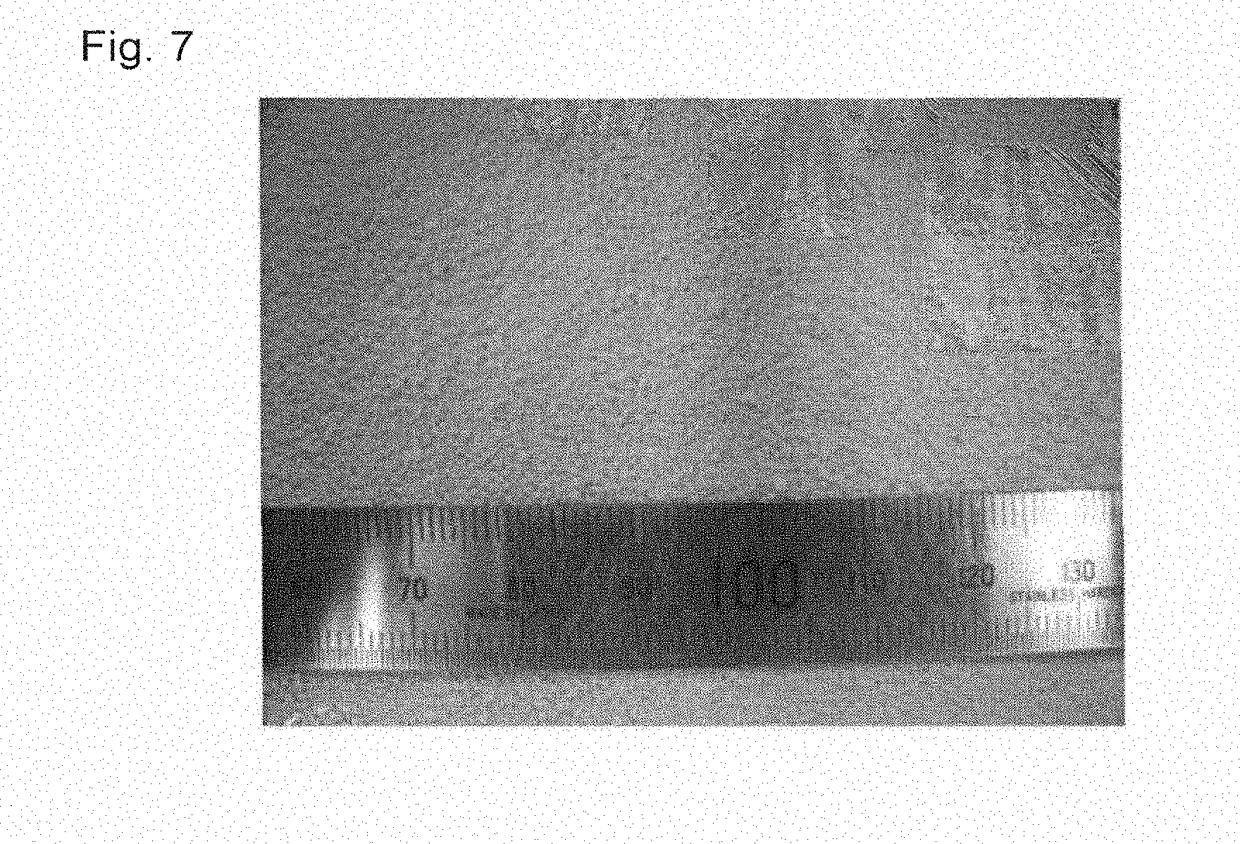Granules, method for their production, and method for producing glass product
a technology of glass products and granules, applied in the field of granules, method for their production, and method for producing glass products, can solve the problems of low unstable glass composition, waste of part of glass raw materials, etc., and achieve good homogeneity in glass composition
- Summary
- Abstract
- Description
- Claims
- Application Information
AI Technical Summary
Benefits of technology
Problems solved by technology
Method used
Image
Examples
preparation example 1
a Cement (A4)
[0160]Alumina cement (A4) was prepared by the following method. Calcium aluminate contained in alumina cement (A4) is C3A, and neither CA nor CA2 is contained.
[0161]Firstly, calcium carbonate and aluminum oxide were weighed so that the molar ratio of CaCO3:Al2O3 would be 3:1, and after mixing for 10 minutes, the mixture was packed in a cylindrical platinum container having a diameter of about 150 mm and a height of about 50 mm, and placed and fired in an electric furnace maintained at 1,350° C. After cooling, the product was pulverized so that D50 would be about 50 μm thereby to obtain a powder (alumina cement (A4)) containing calcium aluminate. The composition of the main components of alumina cement (A4) (represented by mass percentages based on oxides) as calculated from the raw material composition, is shown in Table 1.
[0162]With respect to the obtained alumina cement (A4), the X-ray diffraction spectrum obtained by powder X-ray diffractometry using a CuKα ray is sh...
PUM
| Property | Measurement | Unit |
|---|---|---|
| temperature | aaaaa | aaaaa |
| diameter | aaaaa | aaaaa |
| mass % | aaaaa | aaaaa |
Abstract
Description
Claims
Application Information
 Login to View More
Login to View More - R&D
- Intellectual Property
- Life Sciences
- Materials
- Tech Scout
- Unparalleled Data Quality
- Higher Quality Content
- 60% Fewer Hallucinations
Browse by: Latest US Patents, China's latest patents, Technical Efficacy Thesaurus, Application Domain, Technology Topic, Popular Technical Reports.
© 2025 PatSnap. All rights reserved.Legal|Privacy policy|Modern Slavery Act Transparency Statement|Sitemap|About US| Contact US: help@patsnap.com



